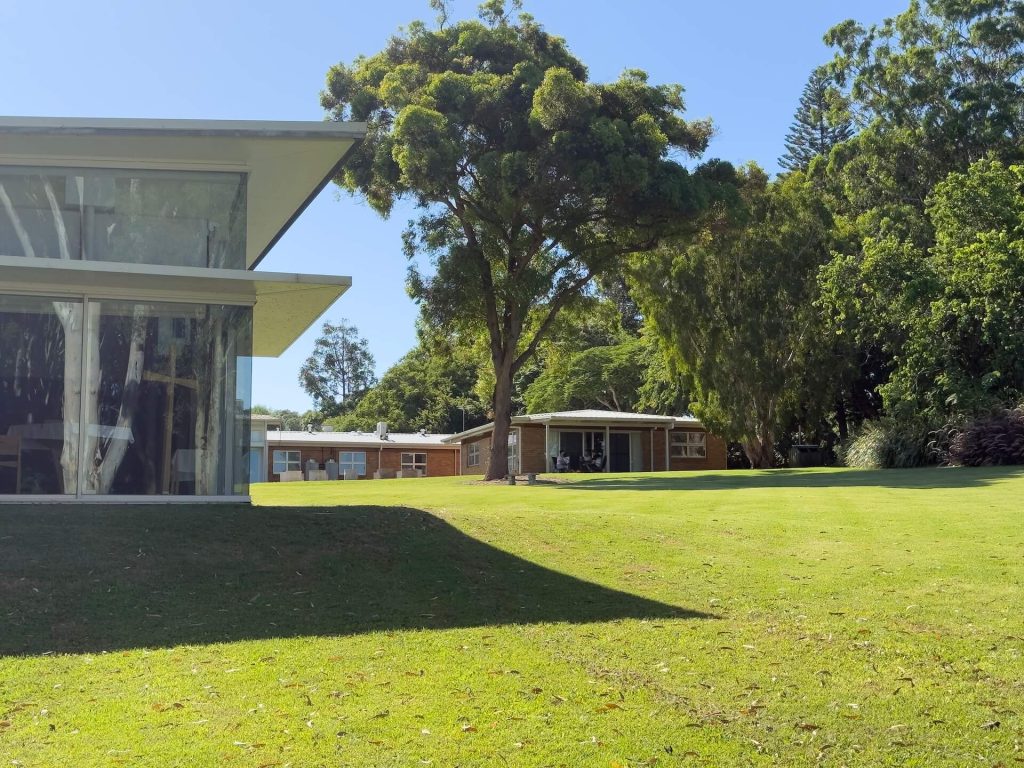Vision & Story
Love can accomplish all things. Things that are most impossible become easy where love is at work.
St Therese of Lisieux
Our Vision
Encounter with God
Guests take time out of their lives, for some, a once in a lifetime experience, while for others an annual spiritual health check, to reconnect with God and to grow deeper in this relationship
Quiet Prayer and Reflection
Spiritual Formation
Hospitality
Great Natural Beauty
Refreshment & Enjoyment
Rich Heritages linked to
The Cenacle Sisters, who built and ran the Cenacle retreat Centre from 1980-2005
The naming of the Centre by Archbishop Bathersby (2006+) to provide connection to the indigenous people of North Stradbroke Island (Quandamooka people) and the Santa Teresa community outside Alice Springs (Eastern Arrernte people)
Safety
Bookings

Our Place
You are invited to come and spend some time in prayer and quiet reflection here at Ormiston at the Santa Teresa Spirituality Centre. This can happen as:
Individual Retreatants
- for directed or non-directed retreats for periods from a single day to an extended period or
Groups undertaking Spiritual Formation such as:
- parish & deanery pastoral & finance councils
- priests, deacons, seminarians
- parish staff
- religious institutes
- renewal groups
- ministry groups
- prayer groups
- school staff
- church agency staff
- clergy and laity from other Christian churches
Address: 267 Wellington Street, Ormiston, Queensland 4160
Our Prayer
Prayer of St Therese of Lisieux
May today there be peace within.May you trust God that you are exactly where you are meant to be.May you not forget the infinite possibilities that are born of faith.May you use those gifts that you have received, and pass on the love that has been given to you.May you be content knowing you are a child of God.Let this presence settle into your bones, and allow your soul the freedom to sing, dance, praise and love.It is there for each and every one of us.
Our Inspiration
The name Santa Teresa Spirituality Centre was chosen by Archbishop Bathersby because:
- Saint Therese of Lisieux (1873-97) was a young Carmelite nun whose life was marked by obedience to God in the simple things of life.
- The Archdiocesan Spirituality Centre was built on land previously owned by the Carmelite Sisters, who live next door.
- Santa Teresa (the Italian form of St Therese) became the youngest Doctor of the Church in 1997, when she was promoted by Pope John Paul II as the ‘Doctor of Love’.
Santa Teresa is a model of holiness for young people. She is a woman who has achieved holiness already in her young age (she died at age 24). She can illumine the path of youth today, called to bear the Gospel witness to the new generations. (Pope John Paul II in his 1997 Apostolic Letter ‘Divini Amoris Scientia’)

